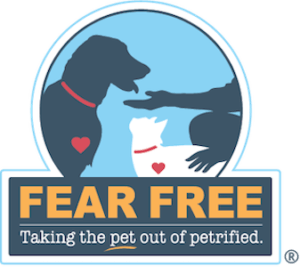Tracey L. Deiss, DVM
The age-old saying “an ounce of prevention is worth a pound of cure” may make you smile in nostalgia, but it rings true for veterinary dental care because prevention is imperative to our patient’s long-term oral and systemic health. It can be tempting for pet owners to push scheduling their pet’s dental cleaning procedures to the back molar simply because they do not perceive their pet to be experiencing any problems. Next thing you know, one year becomes two then three then four, resulting in deterioration of their pet’s oral health and increased risk of secondary periodontal and systemic disease.
So how can we prevent our patients from landing on the “Who’s Who” list of pets with complex medical conditions in concurrent need of emergent dental care? By communicating and educating on the “why” behind routine dental care and by helping mitigate the fear, anxiety, stress, and concern around general anesthesia.
The journey back to smile begins by acknowledging pet parent concerns and sharing information. Periodontal disease is one of the most common diseases in dogs and cats, and it is estimated that most of them have some degree of periodontal disease by the age of three.1 Getting ahead of plaque formation before it leads to inflammation, pain, and periodontal disease is essential in preventing and managing periodontal disease. Teaching pet owners about the impact of periodontal disease on internal organs such as the heart, kidneys, and liver2,3 is a key component to maintaining our patients’ oral and systemic health. Using visual aids, like a smile book of before-and-after photos or client testimonials and walking pet owners through the differences between Stage I preventative cleaning versus a Stage 3 advanced procedure, can encourage pet owners to schedule sooner rather than later. In addition to looking out for their pet’s health, looking out for their pocketbooks by letting them know that the cost of treating severe dental disease is 2.5 times more expensive than the cost of a routine cleaning4 is greatly appreciated.4
Once we’ve partnered with our clients around the importance of routine dental care, next comes addressing the anesthesia elephant in the room. While the need for anesthesia in veterinary comprehensive oral health and treatment (COHAT) is obvious to members of the vet health team, it may not be for pet owners. If our patients could open and say “aah” on cue and sit patiently for dental radiographs, scaling, and polishing, then we could avoid anesthesia. But since they cannot, we must maintain their (and our) physical and emotional safety by leveraging anesthesia. While anesthesia is not without risk, sharing your plan to maximize success through a tailored multimodal and Fear Free approach can help ease client apprehensions. Beginning their journey on the right paw by offering pre-visit pharmaceuticals and minimizing anesthetic time by scheduling COHATs before the development of advanced dental disease is a win for all. Remember, for even the most amenable patients, change in daily routines can induce fear, anxiety, and stress so why not make the experience more pleasant with the proactive and standard use of PVPs prior to all anesthetic events.
Rounding out our journey back to smile, we can set our patients and clients up for success in the recovery and discharge phase of dental procedures by taking the time to share details of the procedure: before and after photos of their pet’s teeth, dental radiograph findings, as well as customized home care instructions. When owners know that they are an important part of their pet’s dental health journey, the vet health team-client-patient bond is strengthened, which will give you all something to smile about!
References
- Niemiec, BA., Top Companion Anim Med, 2008
- DeBowes, L.J., Vet Clin North Am Small Anim Pract, 1998.
- Pavlica, Z, et al. J Vet Dent, 2008.
- Nationwide: Veterinary Wellness Visits Keep Pet Costs Down; Annual Examinations Can Save Pet Owners from Racking Up Expensive Bill
This article was reviewed/edited by board-certified veterinary behaviorist Dr. Kenneth Martin and/or veterinary technician specialist in behavior Debbie Martin, LVT.


 Brought to you by our friends at Zoetis. ©2022 Zoetis Services LLC. All rights reserved. NA-03129
Brought to you by our friends at Zoetis. ©2022 Zoetis Services LLC. All rights reserved. NA-03129



